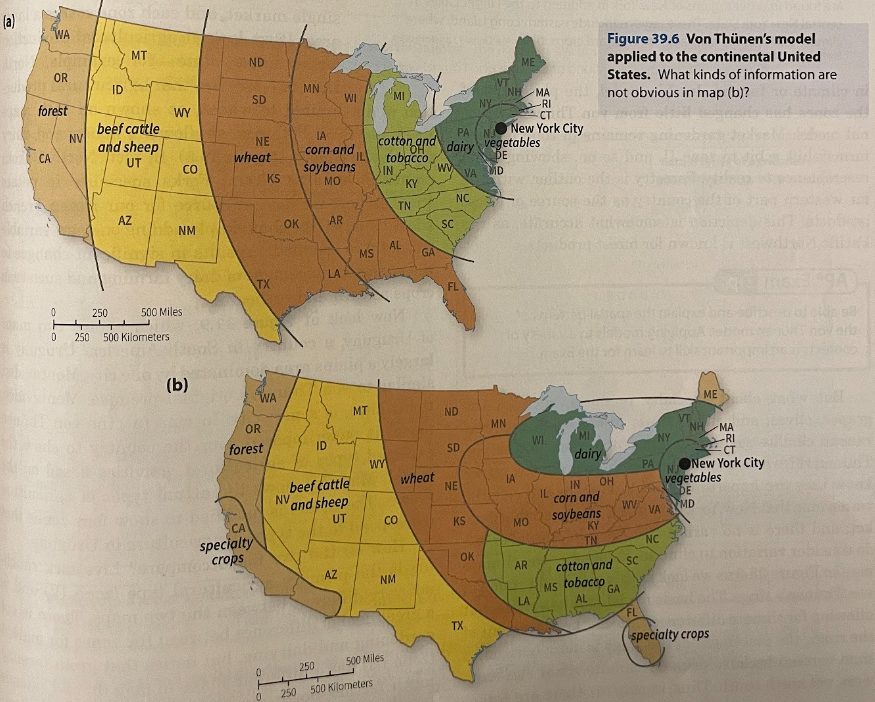The von Thünen Model Info Cards - AP Human Geography
1/9
Earn XP
Description and Tags
use spaced repetition/flashcards
Name | Mastery | Learn | Test | Matching | Spaced |
|---|
No study sessions yet.
10 Terms
Assumption: There is only one centrally located market
Problem: Modern agriculture systems almost always have multiple markets. Even back in the 19th century, Philadelphia was a big market competitor to New York.
Assumption: Soil, climate, and terrain are uniform throughout the area of interest
Problem: Sometimes this is the case, but it won’t always be true.
Maps on right compare US based purely on von Thünen vs also considering climate

Assumption: All farmers located the same distance from the market have equal access to it.
Problem: Planes, trains, trucks, and other forms of transportation affect travel speed, so farmers with access to transportation will be relatively closer
Assumption: All farmers seek to maximize their profits.
Problem: Not everyone does. Some farmers participate in subsistence agriculture: farming to feed their local community rather than selling it for food.
Purpose of the Model
To predict where different kinds of agriculture are practiced based on the cost and time it would take to get their products to market.
Zone 1 Agricultural Types
Dairy Farming/Market Gardening
Perishable products… need to get to market fast
Zone 2 Agricultural Types
Forest - for wood
Transporting wood just sucks so it’s typically close by
Typically doesn’t stretch along rivers
Zone 3 Agricultural Types
Grains and field crops
doesn't perish, no rush
Zone 4 Agricultural Types
Livestock ranching
Owners typically didn’t pay for transportation
Weaknesses of Model
Unable to identify specialty agricultural production
assumes many things